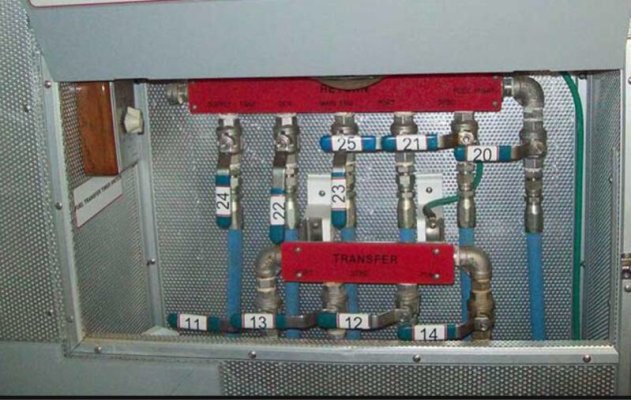albertldee
Member
hi don't know if there is any experience fuel manifold specialist could help me design a fuel manifold material is not a problem just want to design something simple
this is what I have
2 tank AFT & FWD each tank have 1 feed only
2 pump AC and DC
what I would like to do is to have the AC pump suck and transfer to either tank
Likewise the DC pump to suck and transfer to either Tank
if I get a drawing I can follow the instruction
thanks in advice busting my brains here trying to figure it out and make it simple
this is what I have
2 tank AFT & FWD each tank have 1 feed only
2 pump AC and DC
what I would like to do is to have the AC pump suck and transfer to either tank
Likewise the DC pump to suck and transfer to either Tank
if I get a drawing I can follow the instruction
thanks in advice busting my brains here trying to figure it out and make it simple



